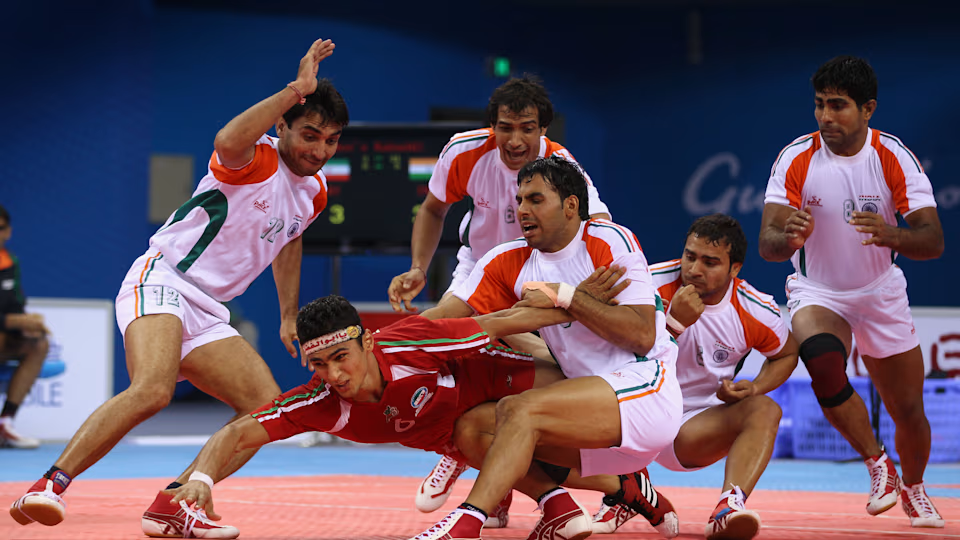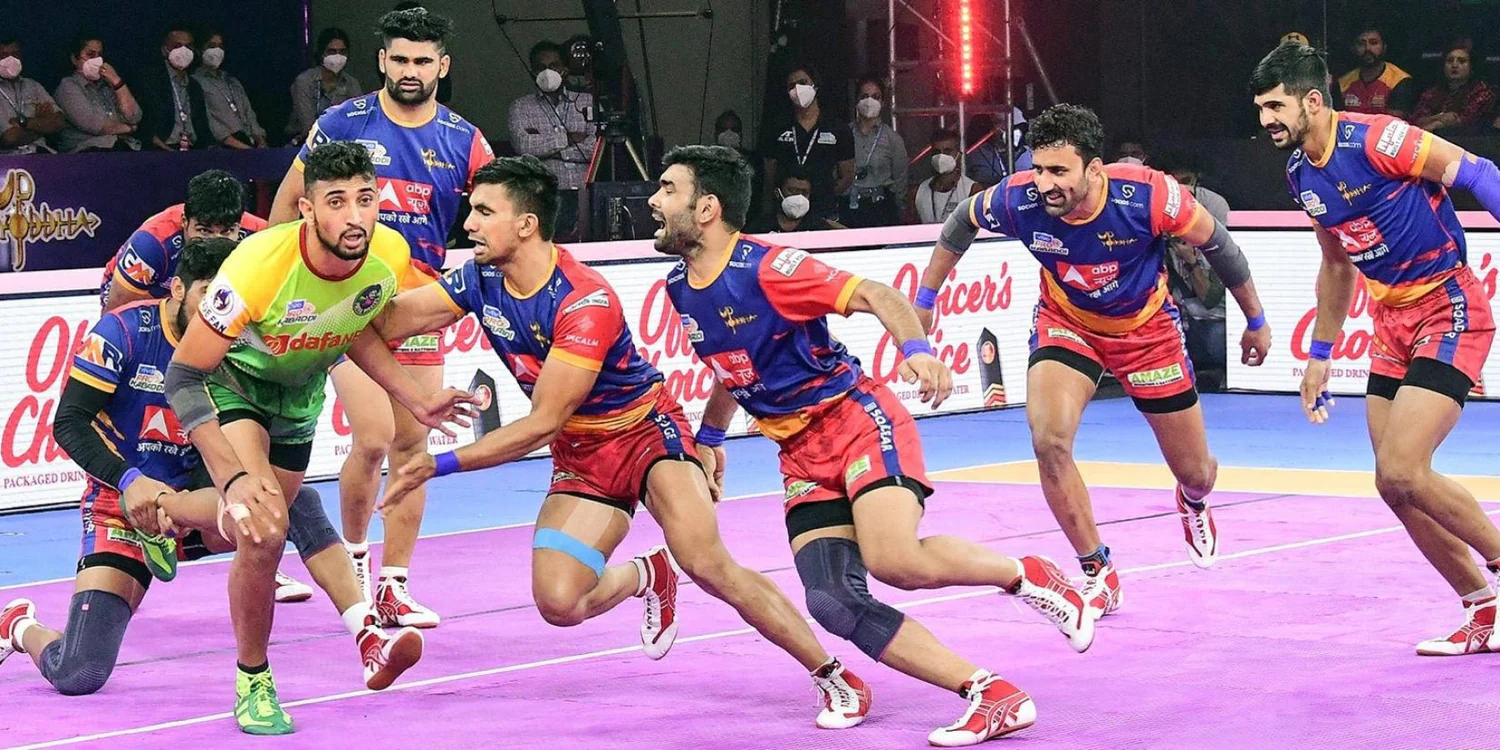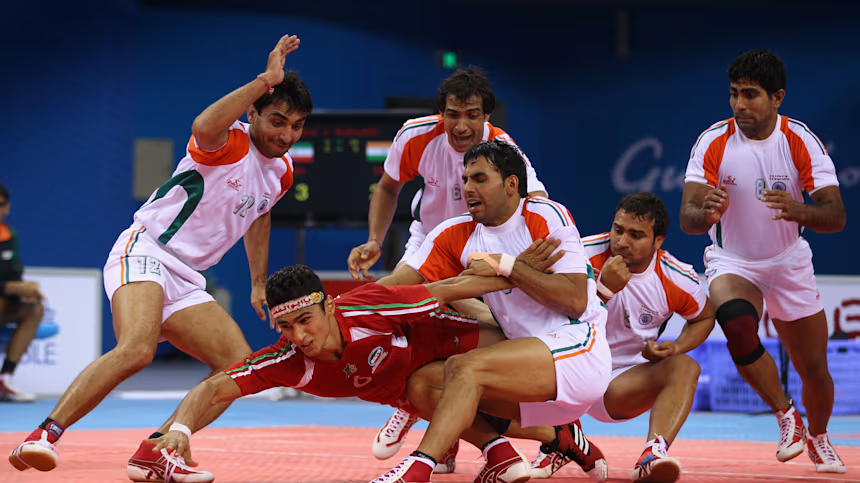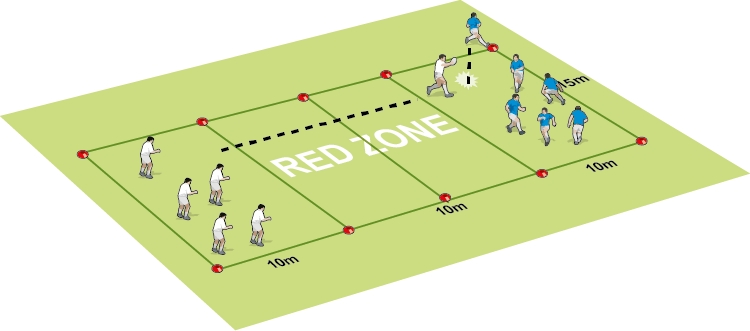Kabaddi is a fast-paced team sport with simple yet thrilling gameplay that requires a combination of skill, strategy, and physical endurance. To succeed in Kabaddi, players must understand the basic rules of the game and the essential strategies used by top players. This article will break down the fundamental rules of Kabaddi and highlight some of the most effective strategies to help players improve their game.
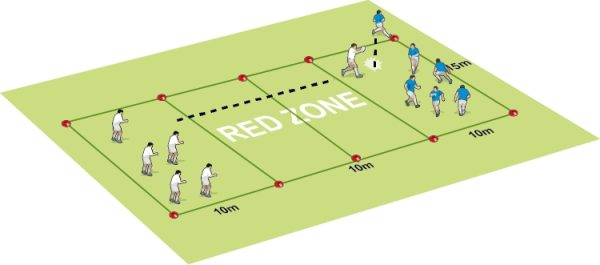
-
The Basics of Kabaddi – Understanding the Gameplay
The basic objective of Kabaddi is simple: the raider must tag as many defenders as possible without being tackled, while staying in the opponent’s half of the court. The defenders aim to stop the raider by tagging or wrestling them to the ground.
Key Rules:
- Raiding: The raider must cross into the opponent’s side and attempt to tag one or more defenders while holding their breath. The raider must return to their side without being tackled to earn points.
- Defending: The defenders attempt to stop the raider by holding or tackling them. If the raider is successfully tackled or pinned, the defending team scores a point.
- The “Kabaddi” Chant: A raider must continuously chant “Kabaddi” while on the offensive side to prove they are holding their breath. If they stop chanting, they are considered “out.”
- Lifeline: When a player is tagged, they have the opportunity to be “revived” if their teammate successfully raids.
-
The Kabaddi Court and Teams
Kabaddi is played on a rectangular court divided into two halves, each belonging to one of the teams. The court measures approximately 13m by 10m for professional matches.
Team Composition:
- Each team consists of 7 players on the field, and substitutes can rotate in as needed.
- Teams alternate between attacking (raiding) and defending during each game. The raiding team sends one player at a time to attack, while the defending team tries to stop them.
-
Scoring System and Timing
Kabaddi matches are typically played in two halves of 20 minutes each, with a short break in between. Points are earned in several ways:
- Raiding: A raider scores a point for each defender they tag and successfully return to their side.
- Tackling: The defending team scores a point if they successfully stop a raider by tackling them or preventing them from returning to their side.
- Bonus Points: A raider can earn an additional point if they tag a defender from a specific area of the court called the “bonus line.”
-
Types of Raids and Strategies
4.1. Standard Raid:
The most common form of raiding involves the raider attempting to tag one or more defenders while holding their breath and returning to their side. The raider uses quick movements and deceptive tactics to avoid getting tagged.
4.2. Dubki Raid:
This advanced technique is used when the raider ducks under the defenders’ tackles to escape. It’s particularly effective when facing defenders who are anticipating a direct attack.
4.3. Jumping Raid:
This move involves the raider jumping over defenders to avoid being tagged. It requires timing and agility to execute properly.
Strategic Tips for Raiding:
- Use fakes: Fake your movements to trick defenders into overcommitting to one direction, then quickly change your position.
- Timing is key: Wait for the right moment when the defenders are spread out, then make your move.
- Quick return: Once you’ve tagged a defender, quickly return to your side to minimize the chance of being caught.
-
Defensive Strategies
Defenders in Kabaddi play a vital role in preventing the opposing raiders from scoring. Effective defense requires strong teamwork, communication, and tactical positioning.
5.1. The Ankle Hold:
One of the most effective defensive moves is the ankle hold, where defenders grab the raider’s ankle and stop their progress. This move requires timing and strength.
5.2. The Chain Defense:
This strategy involves multiple defenders working together to form a chain around the raider. The chain defense minimizes the raider’s escape routes, making it difficult for them to break free.
5.3. Anticipation and Timing:
Defenders must be able to read the raider’s movements and anticipate their next move. Successful tackles often come from positioning and timing rather than sheer strength.
Advanced Defensive Tips:
- Positioning: Always position yourself between the raider and the bonus line to prevent easy escapes.
- Communication: Communicate with your teammates to form a coordinated defense and increase the chances of a successful tackle.
